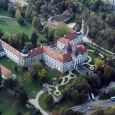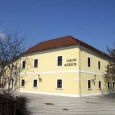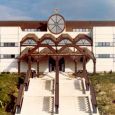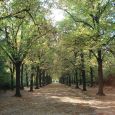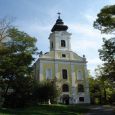Godollo
Advertisement
By rail
Rail is clearly the fastest and most convenient way of getting into Godollo from Budapest, so unless you have a car there's no reason not to go by rail. Budapest has two suburban rail systems: the HÉV operated by BKV , and regular személy trains operated by MaV (the national rail operator). Both serve Godollo, but not the same parts. However, if coming from central Budapest MaV is almost always the better option.
By car
Godollo is accessible by the M3 motorway out of Budapest.
Grassalkovich Kastely
Grassalkovich Kastely located across the street from the Szabadsag ter HEV stop, the royal palace is Godollo's main attraction. Built in the 1740s, the baroque mansion was originally home to Count Anton Grassalkovich. With the creation of the Austro-Hungarian Empire, the palace was given to the Habsburgs as a gift and was often frequented by Queen Elizabeth, better known as Sisi. During communism the palace fell into ruin and has only recently been partially restored. Besides a tour of the royal apartments, there are also the Baroque theater and the royal chapel. Concerts are also frequently held here.
Godolloi Varosi Mazeum
Godolloi Varosi Muzeum is located on Szabadsag ter, close to the HEV station. The exhibit focuses primarily on the Godollo artists' colony from the early 1900s, and has several excellent examples of Hungarian Art Nouveau. There is also an ethnographic exhibit on Oceania, collected by Ferenc Ignacz, who worked at the university in Godollo. Another small room houses the private collection of Zoltan Mihaly Csupor, a Catholic priest.
Mariabesnyo Pilgrimage Temple
Mariabesnyo Pilgrimage Temple Mariabesnyo is mostly easily accessed by taking the train to the Mariabesnyo station. You'll be greeted by a large Szekely-style Transylvanian gate from 1942 as you walk toward the temple. The temple was commissioned by Grassalkovich when workers found a statue of the Virgin Mary on the site in 1759. It is the only two-storied baroque temple in the country, and you can also see the smallest Virgin Mary statue in the country, a museum about the Virgin, the Grassalkovich crypt, and do wine-tasting in the monastery.
Reformed Church
The baroque style Refomed Church, built in 1745 is an onion dome church with a beautifully simple facade. The building process was patronized; the money and the plot for the church was donated by Antal Grassalkovich I who demolished a Reformed Church built in 1657 at the site of the present Royal Castle. The new baroque church was consecrated in 1745. The church was renovated several times during history: in 1912 the complete painted and carved wooden ceiling and the chancel were changed into concrete. The prang in 1945 affected the church seriously and the renovation processes took very long. The renovation of the tower was finished in 1993.
Museum of Agricultural Machinery
The museum hosts the second largest collection of agricultural machinery in the world. On its 6,000 square meters it is home to a collection of more than 2,000 agricultural machines that are still working. Six exhibitions introduce agricultural machinery and curiosities in the history of agricultural techniques. The visitor will be introduced the 2.5 million year-old history of food acquisition and production through some models reconstructed with the help of original designs and machines. It is a true adventure of understanding mankind's tough fight for the daily bread. The exhibitions show the development of the machines from very early times like wind, water and steem powered agricultural machines to modern ones used today. Some 200 agricultural models show the development of food producing machinery together with documentation on the technical history of the respective time. Hungaricums are on display here: more than 300 types of food introduce the traditional food of Hungarians arranged in a thematic order according to regions. The complete history of Hungarian agricultural production is explained in an exhibition in which the visitor can see soil cultivating machines, plant cultivating machines and those for animal husbandry used by the ploughmen in earlier times to modern machines used today
Information not available


